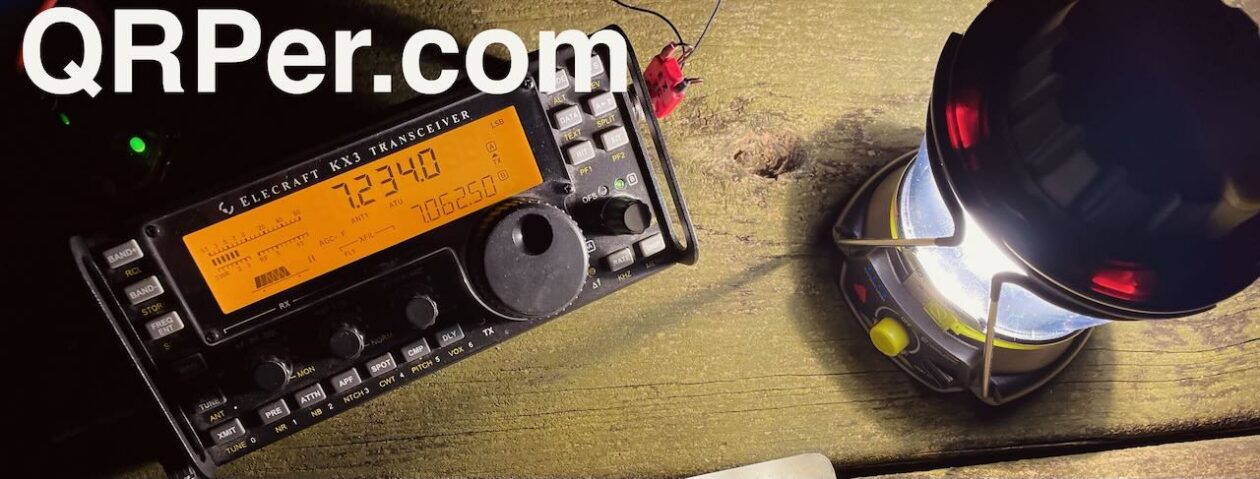I mentioned in a previous post that Jesse at Chelegance had sent me some antenna goodies to evaluate. One of them was the MC-599 portable dipole antenna which you might have read about in my previous field report.
Another item he sent, which I was equally excited about, was an 80-meter coil for my beloved MC-750 vertical antenna.
In the spirit of full transparency: he sent this at no cost to me, and, as a reminder, Chelegance is also an affiliate of QRPer.com.
I’ve been eager to take the 80-meter coil on a POTA activation because 1.) if it proved effective, it would be great to have such a low-impact, low-profile antenna for 80 meters, but 2.) it’s been very difficult to fit in an evening POTA activation with my family life.
It would have been difficult to gauge how effective an 80M antenna performs in the late morning or early afternoon when I typically activate local parks/summits.
On Wednesday, February 6, 2024, a two-hour window of opportunity opened. One of my daughters had a dress rehearsal that night, and I knew of a nice, quiet, secluded POTA spot only 25 minutes away.
Pisgah National Forest (K-4510) and Game Land (K-6937)
My original plan was to arrive at the Looking Glass Falls’ picnic area, deploy the antenna, fire up the stove, make some coffee, eat on-site, then begin my activation after the start of the UTC day.
So why wait for the new UTC day?
Mainly because once you hit the new UTC day, it counts as a new activation. That really works in your favor as an activator if your goal is to complete a valid activation (with ten contacts) and you’ve enough time to do that before the UTC rollover. If you time it all correctly, you could activate double the parks with a minimum of 20 contacts (split 10/10). In my case, that would mean a total of four parks activated in one evening (since this was a two-fer).
I decided fitting in an activation prior to the UTC rollover simply wasn’t worth the rush.
Once I arrived on-site, however, I was already changing my mind.
I started my activation video, deployed the MC-750, and looked at my watch. I had roughly 15 minutes before the UTC rollover.
It would be tight, but I decided to give it a go and try logging ten contacts before 18:59:59 local (or 23:59:59 UTC).
If I couldn’t log ten before the UTC day, who cares!? It would be a fun challenge for sure, but I wasn’t going to cry if I couldn’t gather enough contacts for a valid activation.
There was another factor, too: operating 80 meters with a 17′ loaded vertical isn’t exactly “efficient.” My theory, though? It doesn’t need to be efficient. It’s crazy portable, convenient, and as a POTA activator, I only need enough performance to get the job done.
Time to hit the air!
Radio Gear:
 Note: All Amazon, CW Morse, ABR, Chelegance, eBay, and Radioddity links are affiliate links that support QRPer.com at no cost to you.
Note: All Amazon, CW Morse, ABR, Chelegance, eBay, and Radioddity links are affiliate links that support QRPer.com at no cost to you.
- Elecraft KX2 with Windcamp X2 Side Rails and Cover
- Tufteln KX2 Protective Cover
- Elecraft KXBT2 Li-Ion Battery Pack
- LowePro CS60 Hard Side Case
- High Visibility Jacket ABR240-UF with PL-259s and 5 Ferrites (Use Coupon Code ABR10QRPER for 10% Discount!)
- Chelegance MC-750
- Chelegance MC-750 80 Meter Coil
- SO-239 to BNC Adapter
- Begali Adventure Dual (with KX mounts)
- GoRuck GR1 USA
- GraphGear 0.9mm 1000 Automatic Drafting Pencil
- Rite In The Rain Top Spiral Notebook
- My fingerless gloves
- Camera: DJI OSMO 4 action camera with Sensyne Phone Tripod
- Fenix HM65R-T Headlamp
- Microsoft Surface Go 2 running HAMRS
Coffee Gear:

- Snow Peak Giga Power 2.0 Stove
- Snow Peak GigaPower 110 Gold Fuel Canister – 110g
- TOAKS 750ml pot
- Kleen Canteen Mug
- Aeropress Original Coffee and Espresso Maker
- Dynamite Roasting Decaf Espresso (ground at home)
On The Air
 I’d scheduled my activation on the POTA website, so was relying on it to spot me via the Reverse Beacon Network.
I’d scheduled my activation on the POTA website, so was relying on it to spot me via the Reverse Beacon Network.
I started calling CQ POTA and the contacts started rolling in… very… slowly.
Well, it felt slow because I had a goal of ten contacts in fifteen minutes. Continue reading QRP & Coffee: Late-Shift POTA using the new Chelegance MC-750 80 Meter Coil!






































































